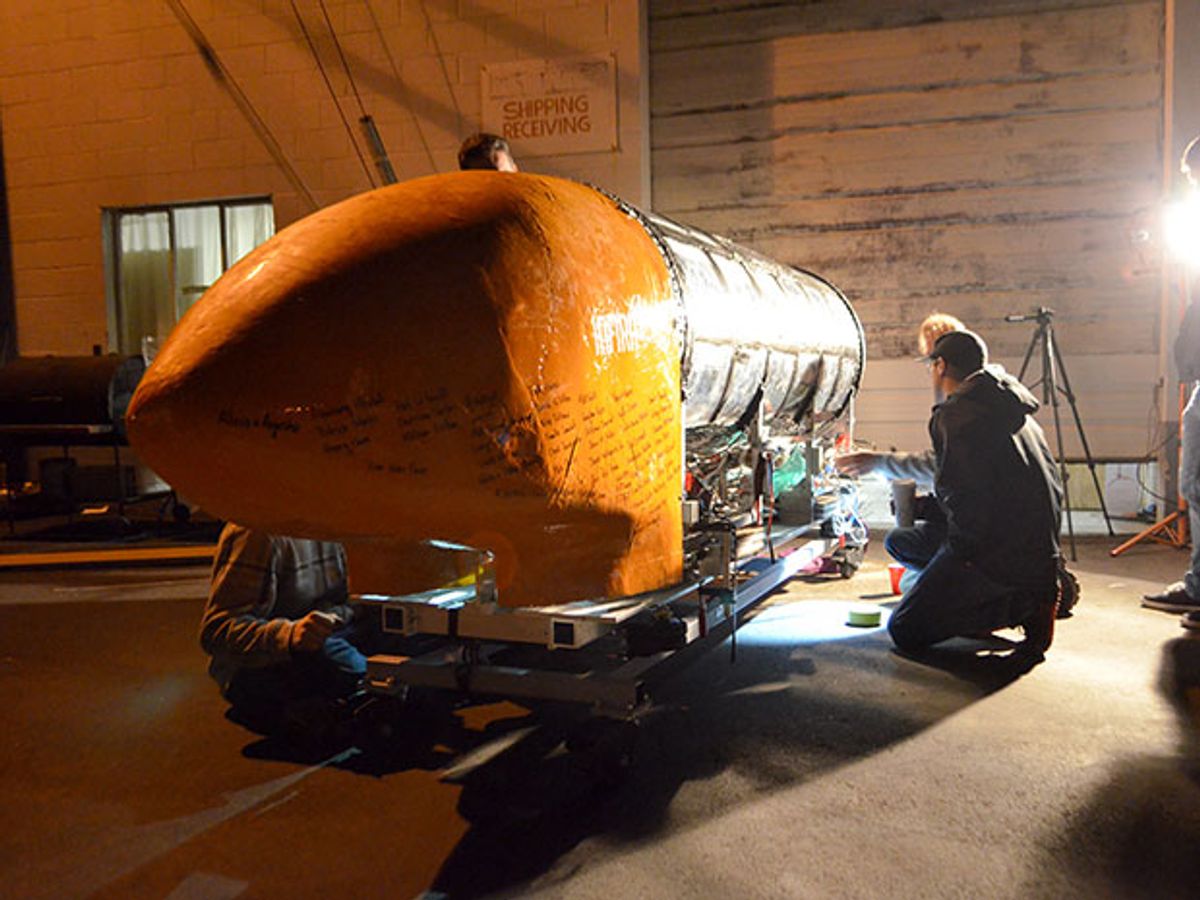Most teams at Sunday’s Hyperloop competition will use passive magnetic fields to levitate their pods inside the mile-long test track outside SpaceX headquarters in Hawthorne, Calif. The forward movement of the pod induces the necessary electromagnetic field.
But rLoop, a virtual network of engineers from around the world, is following an active strategy: Its pods will levitate under their own power. Project manager Brent Lessard admits that it’s an energy-hungry solution, but he contends that it alone can lead to commercialization of a futuristic—some would say far out—concept for mass transportation. The idea is to send passenger-carrying pods hurtling at near-sonic speeds through a tube held under a partial vacuum.
“We are not in this necessarily to win the competition but to develop Hyperloop technology,” he says. “You will see pods there that are just built for speed—railguns, essentially. We focus on a scalable pod, and one that would be capable of carrying a passenger or cargo.”
By making the pod self-sufficient, the design allows the tube to do nothing much beyond hold a partial vacuum, one roughly the same as an airliner experiences at high altitudes. Even that requirement slows the competition, though, because every time a pod has to be removed and another put in its place the tube must be repressurized, then depressurized.
The costs of having an active, energy-gobbling pod should be offset by the cost savings of infrastructure that’s relatively easy to build and maintain. And those costs may matter a lot if the plan involves tunneling deep underground, as SpaceX founder and Hyperloop impresario Elon Musk plans to do.
In the previous round of Hyperloop competition, in January, rLoop didn’t even get a chance to make a trial run because there wasn’t enough time and space to accommodate all the entries, Lessard says. The winner was a student-led team from the Massachusetts Institute of Technology. Still, rLoop did win a “pod innovation” award—a tip of the hat to rLoop’s focus on practicality. If indeed it’s competing three days from now (27 August) against purpose-designed missiles, it may have to content itself with another such honorable mention.
The pod measures 1.5 meters high (5 feet), 1 m wide, and 4 m long; it weighs 440 kilograms (970 pounds). In Sunday’s race, the motive power will be provided by an external source, but the hovering will be supported by two battery packs. They consist of 18 modules with six cells each, for a total of 4 kilowatt-hours, Lessard says.
Those batteries power 8 hover engines, each an array of magnets on a motor, the movement of which creates eddy currents which, in turn, produce an electromagnetic field. The engines are on gimbals, to control the pod’s flight—something passive levitation schemes can’t do.
And the pod stays up no matter what happens in the tube. In fact, rLoop’s pod can even levitate its way out of a tube, provided there’s a copper or aluminum sheet under it. And if there isn’t, it can rely on its four wheels, each of which comes with its own electric motor.
All those moving electrons give off waste heat, of course. To cool the motor, the rLoop design uses liquid carbon dioxide; to cool the batteries, it uses a waxy material that liquefies during a run. Then, in the station, it can give up that heat by again assuming a solid form.
Because rLoop’s more than 1000 participating engineers hail from 50-plus countries, most of them had never met before the first part of the competition. “For the second part we did meet to build a prototype,” Lessard says. “We raised more than US $60,000 and partnered with TE Connectivity, which provided a lot of engineering help and also a place to work, in Menlo Park, Calif. We worked the same way we did in the first part, with online people giving advice to people in California. Some of them also came on vacation or on theirs weekend off.”
Philip E. Ross is a senior editor at IEEE Spectrum. His interests include transportation, energy storage, AI, and the economic aspects of technology. He has a master's degree in international affairs from Columbia University and another, in journalism, from the University of Michigan.



